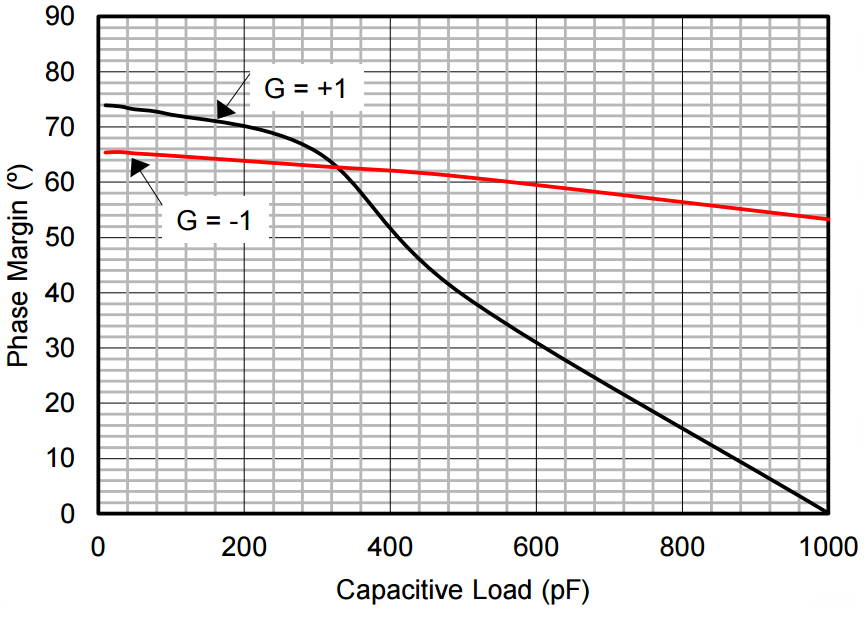This post is co-authored by John Caldwell.
In the first post in our “Amp up your cans” blog series, my colleague John Caldwell and I used a nominal value of headphone impedance to calculate the output voltage and current requirements of headphone amplifiers. The impedance of most headphones is not purely resistive, however. Headphones are notorious for being a difficult load for amplifiers, necessitating proper compensation to avoid stability issues, such as ringing and oscillations.
Numerous compensation techniques exist to address this issue using external components, but wouldn’t it be nice if the op amp didn’t need these additional components? During the development of the OPA1622, a high-performance, low THD+N, bipolar-input audio operational amplifier (op amp), we took on this challenge. Our goal was to minimize, if not eliminate, the need for additional components to maintain stability.
Figures 1 and 2 show the impedance magnitude and phase of several popular headphones. The magnitude plot clearly reveals a resonant peak around 1MHz. This peak results from the cable capacitance and inductance. Beyond this point, the headphone load is dominantly capacitive, as is evident from the phase shift at these frequencies, illustrated in Figure 2. On extracting electrical models for the headphone impedance, the value of this capacitance can be almost 500pF!
Figure 1: Impedance magnitude of several headphone models
Figure 2: Impedance phase of several headphone models
Op amps are not usually designed to drive a large capacitive load. The capacitance interacts with the open-loop output impedance, RO, of the amplifier to introduce a pole, fpO1, in the amplifier’s open-loop gain curve, as shown in Figure 3. This pole causes excessive phase shift in the feedback loop, severely degrading phase margin. The reduced phase margin results in increased ringing in the amplifier’s step response and could potentially cause the amplifier to oscillate. The effect is worse in a unity-gain configuration.
Figure 3: The effect of op amp open-loop output impedance, RO, on capacitive load drive
A common solution is to use an isolation resistor, RISO, between the amplifier and the headphone load (Figure 4), but this heavily degrades audio performance, along with other penalties like reduced output voltage range. John’s article, “Stabilizing difference amplifiers for headphone applications,” examines in further detail the negative effects of series isolation resistors in headphone amplifiers.
Figure 4: Isolation resistor to improve capacitive load drive
With the OPA1622, we took a different approach. We developed an output stage with very low output impedance that pushes the second pole (created by the capacitive load) to a higher frequency. We added additional poles and zeros to the open-loop gain curve at frequencies fpA and fzA (shown in Figure 5), choosing the location of the pole-zero pairs and the pole-zero separation to:
- Provide high gain bandwidth (GBW) in the audio frequency range, resulting in a large loop gain that suppresses harmonic distortion over the audio frequency range.
- Roll off the open-loop response to cross unity-gain well below the output pole, fpO2, resulting in sufficient phase margin with a large capacitive load. See Figure 5.
Figure 5: OPA1622 open-loop response vs. general-purpose amplifier for large capacitive load
Figure 6(a) shows the measured gain and phase response of the OPA1622. The pole-zeros in the response enable the gain to roll off faster with only minor changes in the phase response, allowing adequate phase when gain crosses 0dB. The gain bandwidth in the audio band is around 32MHz, with a unity-gain frequency (UGF) of 8MHz. Figure 6(b) shows the open-loop output impedance of the OPA1622.
Figure 6: OPA1622 open-loop gain and phase (a) and output impedance (b)
We designed the OPA1622 to have a low output impedance of 5.5Ω over a wide frequency range. This allows it to drive capacitive loads over 800pF in a unity-gain configuration, requiring no external components for compensation. See Figure 7.
Figure 7: OPA1622 phase margin vs. capacitive load
We demoed the device at the 2016 Consumer Electronics Show (watch John’s video of the demo) in a circuit that did not include any series isolation resistors. The OPA1622 was stable regardless of the headphone the attendees chose and we received overwhelmingly positive feedback regarding the sound quality.
In part three of this series, we’ll take a look at slew rate, output drive and how the OPA1622 achieves ultra-low distortion while driving headphone loads.
Additional resources
- View the OPA1622 data sheet.
- Download the OPA1622 TINA-TI™ SPICE macromodel.
- Learn more about TI’s audio operational amplifier portfolio and find technical resources.
- Watch on-demand training courses on stability and more in the TI Precision Labs – Op Amps Low-Distortion Design and Noise video series.

